Dwindling water supply leaves some southern Alberta farmers dry
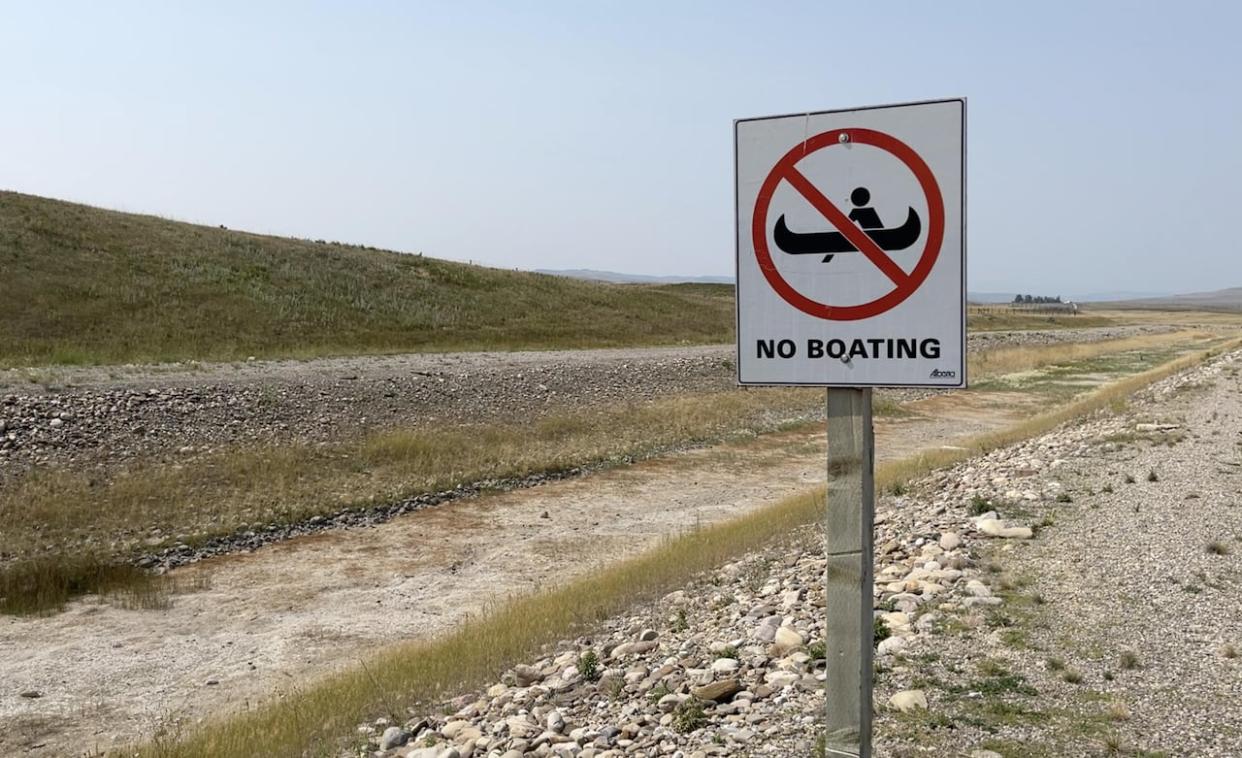
The Bolduc family has been farming and ranching near Stavely, Alta., for generations and this year will be remembered for its scorching heat, lack of rain, parched fields, reduced yields and water restrictions.
It's something their family and many others have seen before, but it doesn't make it any easier as they look to harvest whatever they can from their barley, alfalfa and corn fields.
David Bolduc's farm and ranch operation is partly irrigated from the Pine Coulee off-stream reservoir in the Willow Creek basin west of Claresholm. The reservoir is down significantly this year and people who rely on it for drinking water and irrigation have been told the supply is dwindling and, in some cases, no longer available.
"This has been the first time since they built Pine Coulee that our water has been shut off, essentially," he said.
Record-breaking high temperatures across southern Alberta, a lack of rain and evaporation in reservoirs have led to more than 30 water shortage advisories across the province. Farmers, ranchers, rural municipalities, cities, towns and villages have been told to cut back on water use.
An advisory for Milk River and Sage Creek, south of Lethbridge and east to the Alberta-Saskatchewan boundary, states there is "no natural flow" available for irrigation diversion, which are shut down. No more temporary diversion applications are being accepted.
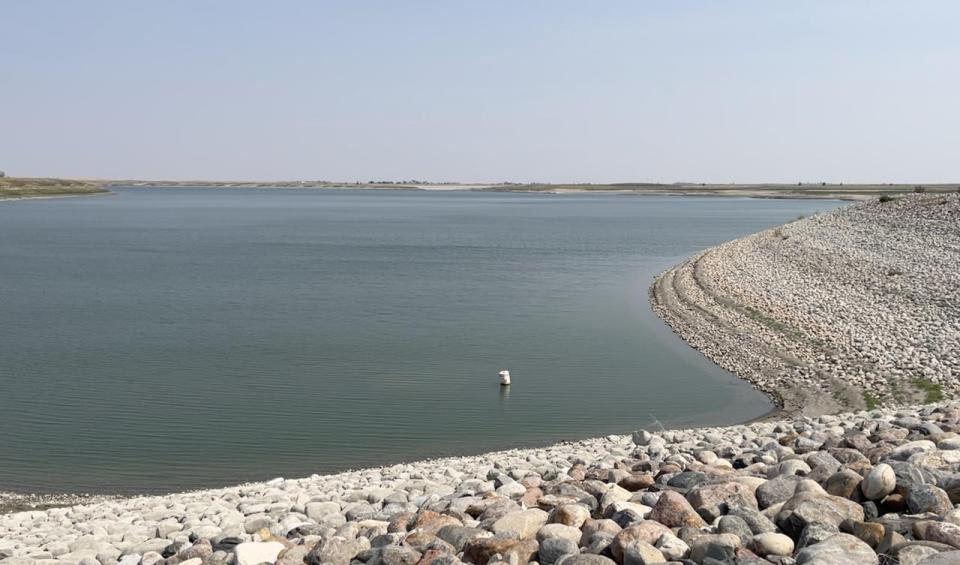
The Pine Coulee reservoir in the M.D. of Willow Creek is only 30-per-cent full. A hot, dry summer has triggered water restrictions for people who rely on the water for drinking and farm irrigation. (Bryan Labby/CBC News)
The Pine Coulee reservoir was built almost 25 years ago and provides irrigation and drinking water for a number of farms, along with the towns of Claresholm and Granum and the M.D. of Willow Creek — areas that have had restricted non-essential water use for more than a month and there's no end in sight.
"People are generally understanding that water levels are low and that they all have a role to play in conserving our limited water supply," said Abe Tinney, the chief administrative officer for the town of Claresholm.
The reservoir is currently less than a third full.
It's the first time the town of 3,800 has imposed Stage 3 water restrictions since the reservoir was built. Tinney says the restrictions will likely remain in effect until spring 2024 and possibly longer depending on the amount of snowpack melt and spring rainfall.
Tinney says the restrictions have led to a 25-per-cent reduction in water use. He says while no fines have been issued for non-compliance, several warnings have been sent out.
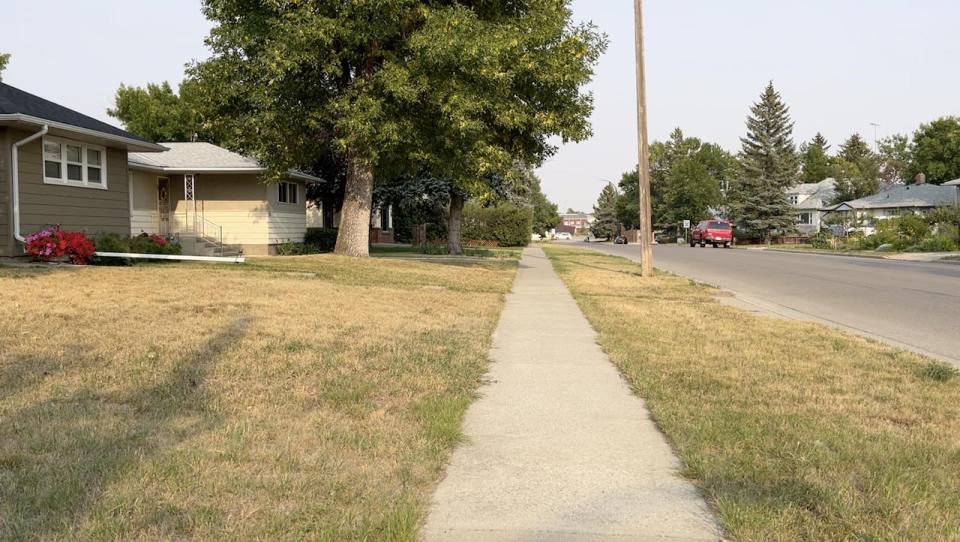
Non-essential water restrictions were put in place in July to reduce consumption in the town of Claresholm, Alta. (Bryan Labby/CBC News)
Almost all of south, southeast and central Alberta is experiencing drought conditions, ranging from severe, extreme to exceptional, which is described as a 1-in-50-year event.
The St. Mary reservoir, south of Lethbridge, is virtually empty at three per cent capacity.
Irrigators, who are entitled to a certain allocation based on inches of water per acre, have already had their water shares reduced by the St. Mary River Irrigation District (SMRID), which oversees 15 reservoirs that irrigate 500,000 acres (202,342 hectares) of farmland.
The St. Mary and the Milk River Ridge reservoir are owned and operated by the provincial government.
In a typical year, SMRID irrigators would tap into 18 inches of water per acre. However, this year it started at 15 inches and it has since been reduced to 13. The reduction comes as demand declines as crops mature and the harvest gets underway.
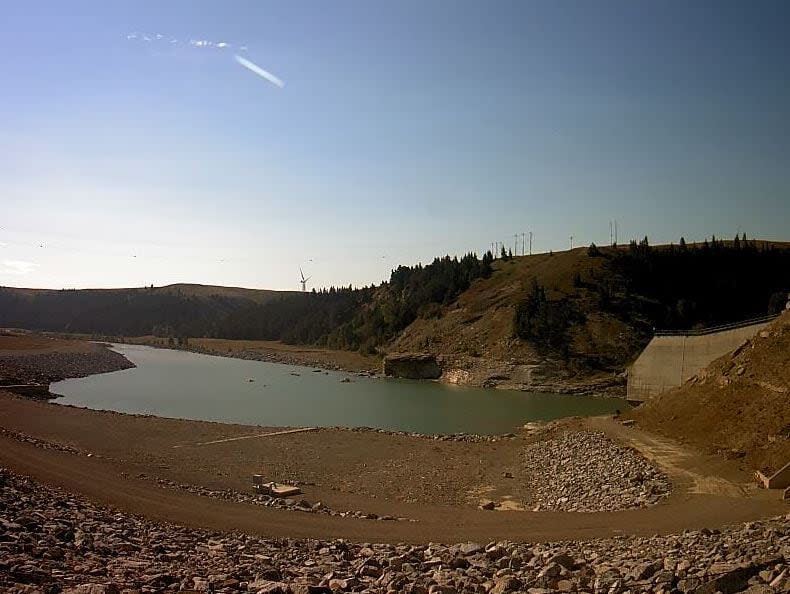
The Oldman reservoir outflow at the Oldman dam is shown in this photo dated August 18, 2023. (Government of Alberta)
The district's general manager warns the irrigation system could be shut down if water supplies decrease faster than projected. David Westwood says irrigators would receive two weeks notice before any shutdown. The St. Mary River Irrigation District has 2,000 customers.
Hot temperatures, lack of precipitation and evaporation have all contributed to dwindling water supplies in most reservoirs across southern Alberta.
The majority of the water used by irrigation districts in Alberta comes from rivers in the South Saskatchewan River Basin, including the St. Mary, Bow, Oldman, and their major tributaries. A relatively smaller supply comes from the Milk River.
The Raymond Irrigation District says now that the St. Mary reservoir is virtually empty, they're now drawing on the Milk River Ridge reservoir, which is also at risk of running dry.
The district is hoping to have enough water to meet demand until Aug. 28, but is urging its customers to fill their dugouts and replenish their water stocks "immediately."
Creeks, streams run dry
The Oldman River reservoir and the river itself supply water for several communities, including Lethbridge. Last Friday, the reservoir level was at 43-per-cent full. It dropped by 10 per cent in just over a week.
Heidi Eijgel has been closely watching Beaver Creek, which runs through her property and drains into the Oldman River in the M.D. of Pincher Creek. The problem, though, is that the creek has run dry. There are just a few tiny pools of water in the creek bed where dozens of dead fish were rotting in 30 C heat. Other sections are either a bit muddy or bone dry.
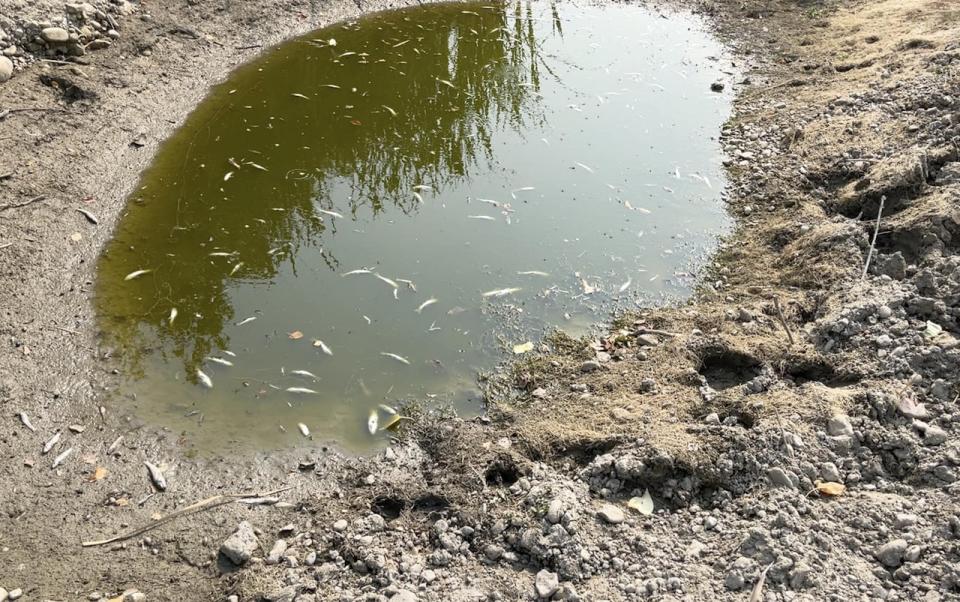
Dozens of dead fish are found in Beaver Creek, which has essentially run dry. This portion of the creek runs through the M.D. of Pincher Creek. (Bryan Labby/CBC News)
A number of beaver dams are still in place, but there's no water to hold back — an no sign of the beavers.
"There was always water behind those dams, but now the water table seems to have dropped way more, and the dams can't even hold water and that's the part that's concerning," said Eijgel.
"It's a natural part of this creek that it would dry up, but just maybe not for this long or not this early,"
She says the beavers usually find a place along the creek to hunker down for the winter. She hopes they found their way to the Oldman River and that the coyotes didn't get them first.
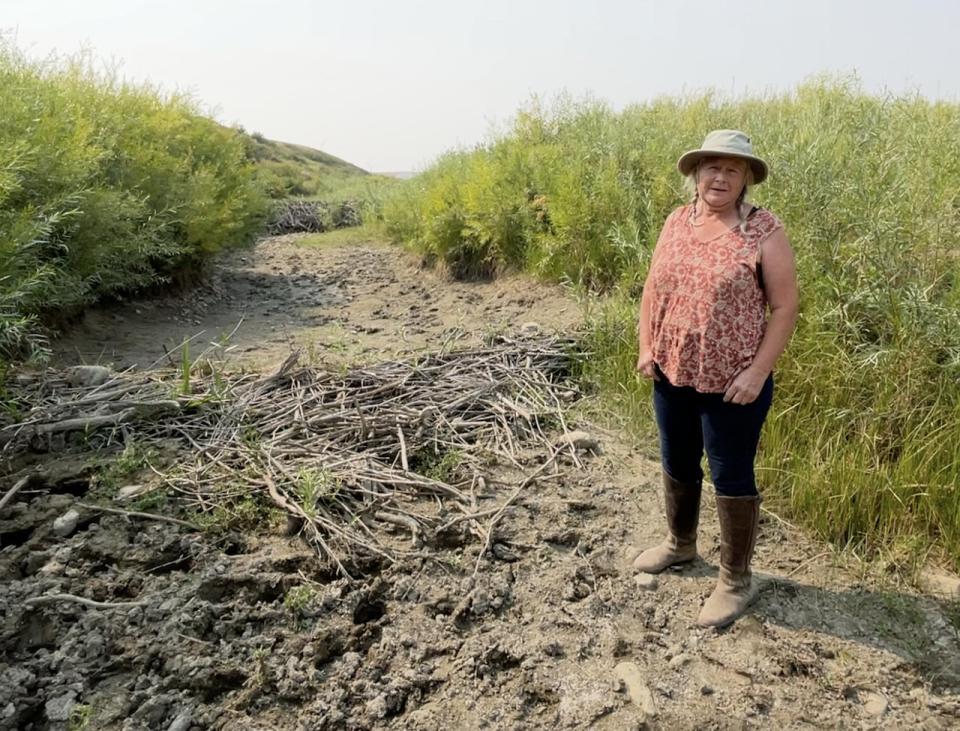
Heidi Eijgel stands on the edge of what used to be Beaver Creek in the M.D. of Pincher Creek. A number of beaver dams are still in place, but there are dozens of small dead fish. (Bryan Labby/CBC News)
The creek was also part of her wildfire protection plan, a place for her 14 rare Canadian horses to head to in the event of an approaching fire.
Eijgel says it might be time to look at how water resources are managed in the area, how many licenses are given out, and how much water can be drawn from area creeks and rivers.
Looking ahead to 2024
Back at the Bolduc farm and ranch near Stavely, Dyce Bolduc, says they were only able to grow about a fifth of their feed supply for their 600 cows.
"This is going to go down as one of the worst [years]," he said.
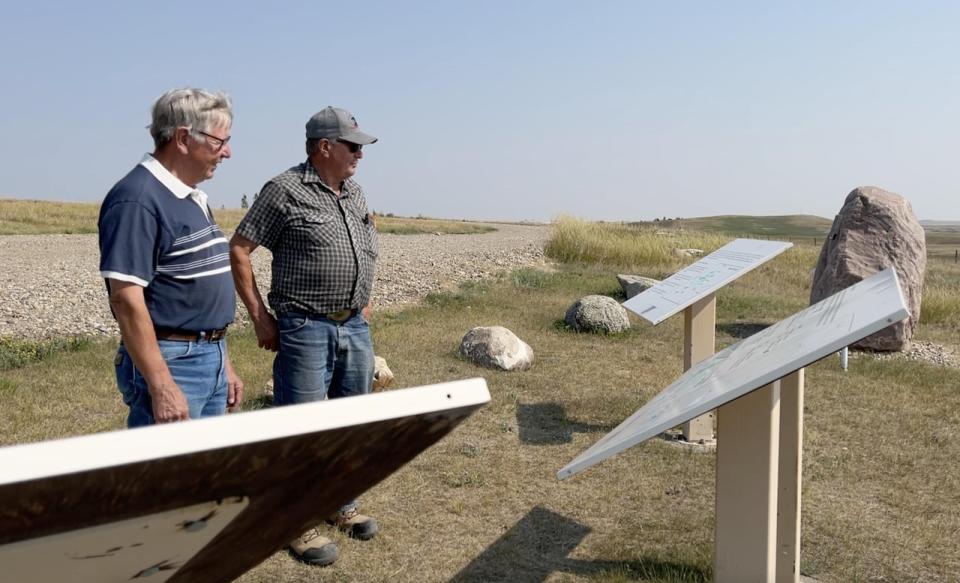
David and Dyce Bolduc stand next to the Pine Coulee off-stream reservoir west of Stavely, Alta. The two brothers run a large farm and beef operation in the M.D. of Willow Creek. (Bryan Labby/CBC News)
They have to look at buying feedstock from other areas, but the costs to truck hay have increased, he says.
"The water sources, that's the problem. We've got springs going dry on some of our properties that we rent," he said.
Bolduc says he's looking ahead to next year and is hoping that the snowmelt from the mountains and spring rains return to normal, but then he stops to ponder what is normal.
"I guess we'd say normal, but who's to say what the normal is now."
Bryan Labby is an enterprise reporter with CBC Calgary. If you have a good story idea or tip, you can reach him at bryan.labby@cbc.ca or on Twitter at @CBCBryan.


